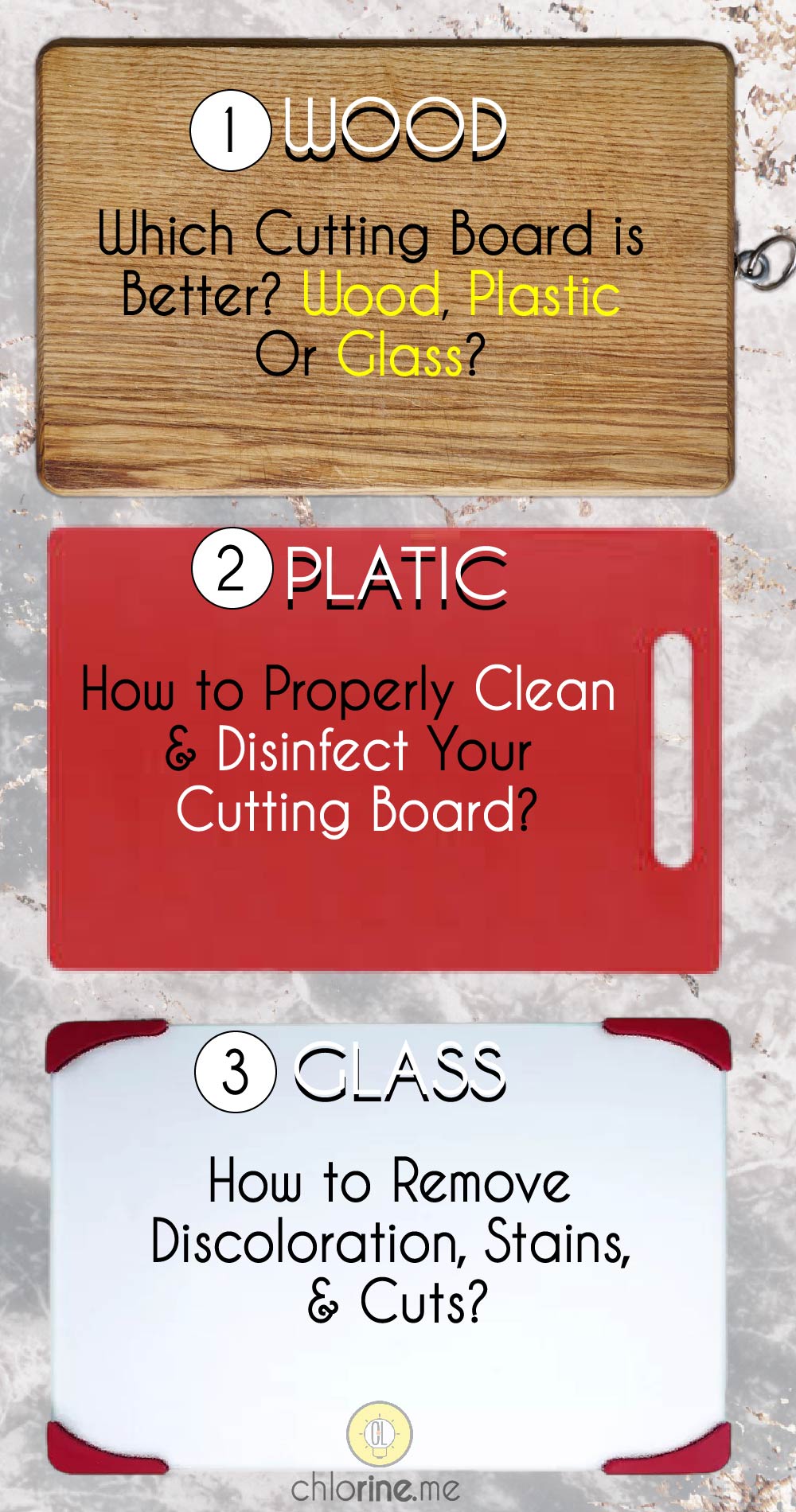It is extremely important that your cutting board is both perfectly clean and disinfected. As food is processed on the kitchen item, it should be free from pathogens and harmful fungi. So, the question is, how to clean cutting boards, disinfect them, and remove any discoloration?
The answer is, a simple cleaning may not help completely cleanse the germs off the board. Besides this, the cleaning method you employ also depends on the type of board you are using. For instance, a wooden cutting board needs different cleaning methods to that of the one made with plastic.
In one of our previous articles, we talked about making our own DIY dishwasher detergent at home. In this chlorine post, we will discuss some of the most effective ways to clean and disinfect cutting boards.
Cutting Boards: Wooden Vs Plastic
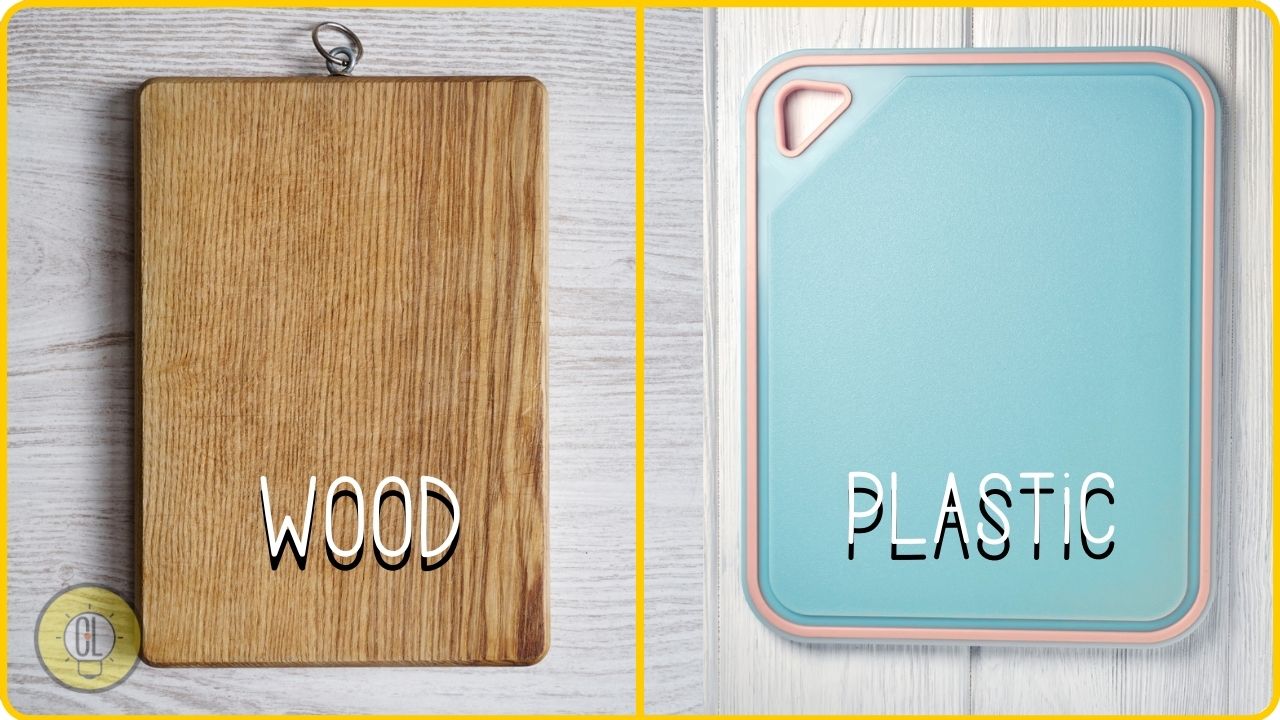
It is widely believed that plastic cutting boards are more hygienic than their wooden counterparts. After all, plastic boards can withstand a dishwashing cycle at high temperatures and they also don’t absorb any fluids.
However, the Bremer Umweltberatung association refers to a study by the Federal Biological Institute in Braunschweig and the German Institute for Food Technology, which certifies that wooden boards provide antibacterial properties. Scientists found out that the tannins contained in types of wood such as pine, spruce, maple, and beech offer germicidal effects for a certain period of time. The best antibacterial properties are offered by Pinewood.
How to Clean Wooden Cutting Boards?
Whether wooden or plastic, cutting boards need thorough cleaning and disinfection. Here are all the effective ways to clean and disinfect your wooden cutting boards:
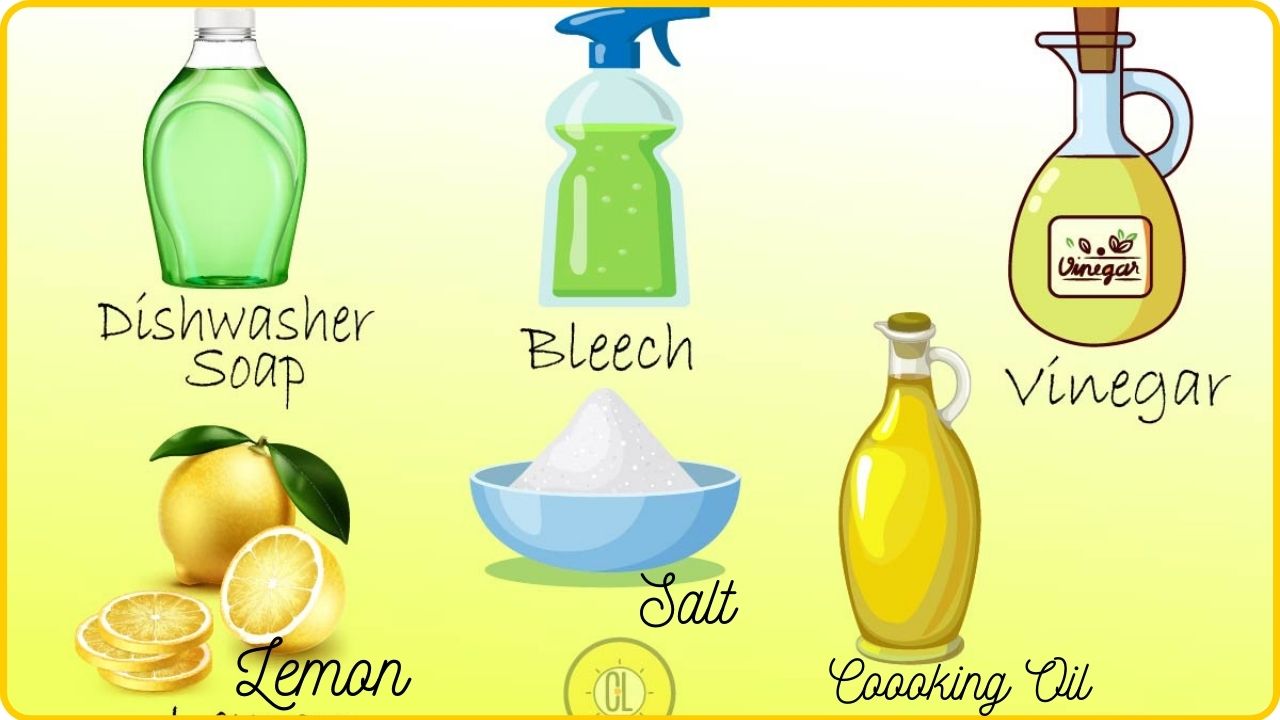
1. Immediate Cleaning
If you use wooden boards to process foods with a strong smell or color, rinse with cold water immediately after use and then with water at around 60 degrees. To effectively remove the germs afterward, brush the board in the direction of the grain with dishwashing detergent or soda.
Once the board is almost dry, rub the cutting board with cooking oil ensuring oil makes a thin layer. This prevents the wood from becoming brittle and cracks formation. This will prevent germs from penetrating deeper into the wood.
2. Dishwashing Detergent
A simple way to thoroughly clean your wooden cutting board is using the dishwasher detergent. Simply turn on the tap, apply some dishwasher detergent and rub clean with a sponge or a brush. You can also use any good antibacterial soap instead of the detergent.
3. Deep Cleaning With Bleech
If you have used your cutting board to cut raw meat, chicken, or fish you may like to employ a better and harsher cleaning method. If you want to make sure that all the germs are terminated, you can use bleach water.
To do this, add a tablespoon of bleach to 5 liters of water. Soak the board for up to 5 minutes. Rinse with water for a slate clean board.
4. Clean Cutting Boards with Vinegar
A good chemical-free cleaning method for both wooden and plastic cutting boards is to use vinegar. Simply add 1 part of white vinegar and 4 parts of water to make a solution. Soak your cutting board in the solution, wait for 5 minutes, remove and rinse with water.
Tip: Don’t leave the board in water or any solution for no more than 5 minutes to avoid cracking when dried.
5. Cleaning Using Lemon and Salt
To maintain and keep your boards hygienic, it’s a good idea to apply this DIY cleaning technique at least twice a month.
To do this, simply wet your board with water, sprinkle coarse salt on both sides. Now, cut a lemon in half and rub it with the fleshy side down. Let the mixture work for 5 minutes then rinse and dry.
How to Clean Plastic Cutting Boards?
Most of the cleaning methods employed in the case of wooden cutting boards can also be used for plastic ones. One better and easier way in the case of plastic is that it can also be put into the dishwasher.
1. Clean Plastic Cutting Boards in Dishwasher
Put your cutting board into the dishwasher and run at the hottest. The temperature on the surface of the cutting board would reach a degree most of the germs won’t tolerate.
2. White Vinegar for Platic Cutting Boards
First, thoroughly wash the cutting board with soap and warm or hot water. Then, spray white vinegar on both sides. Next, wipe or spray hydrogen peroxide (H2O2) and rinse clean.
3. More Methods of Cleaning
For occasional cleaning, you can employ, as we said above, other methods of cleaning as well. For instance, cleaning your cutting board with soap and water will also ensure possible pathogens don’t linger around.
Lemon and salt can also ensure a thorough cleaning. The method of cleaning with salt and lemon is the same as mentioned above. Sprinkle coarse salt, rub with half a lemon, rinse with water.
You may also like: How to Clean & Disinfect Your Shower Head?
How to Remove Discoloration?
If the cutting and kitchen boards are discolored by food such as beetroot or red cabbage, you can easily clean them. Below is a simple way of removing discoloration:
- Mix lemon juice and baking powder to a pulp and spread it over the discolored area. After a few minutes, check to see if the discoloration is still there. If not, leave the mixture on the spot a little longer.
- If the discoloration is due to tomatoes, place the board in the sunlight. The UV radiations will certainly erase any signs of discoloration.
Use Multiple Cutting Boards
Never use a cutting board on which you have prepared raw meat for other foods that you do not want to boil or otherwise cook afterward. Otherwise, dangerous germs such as salmonella can find their way onto lettuce or other raw vegetables. One specifically to process all types of meat and one for vegetables.
Wood, Plastic, Glass, Which Cutting Board to Choose?
Chopping boards are indispensable kitchen helpers, there is always something to cut or chop up. They differ not only in shape and size but above all in the material. Wood, plastic, or glass? Which material is really suitable?
Below is a list of major features of each board that will help you figure out which board suits you the best:
Features: Wooden Cutting Boards
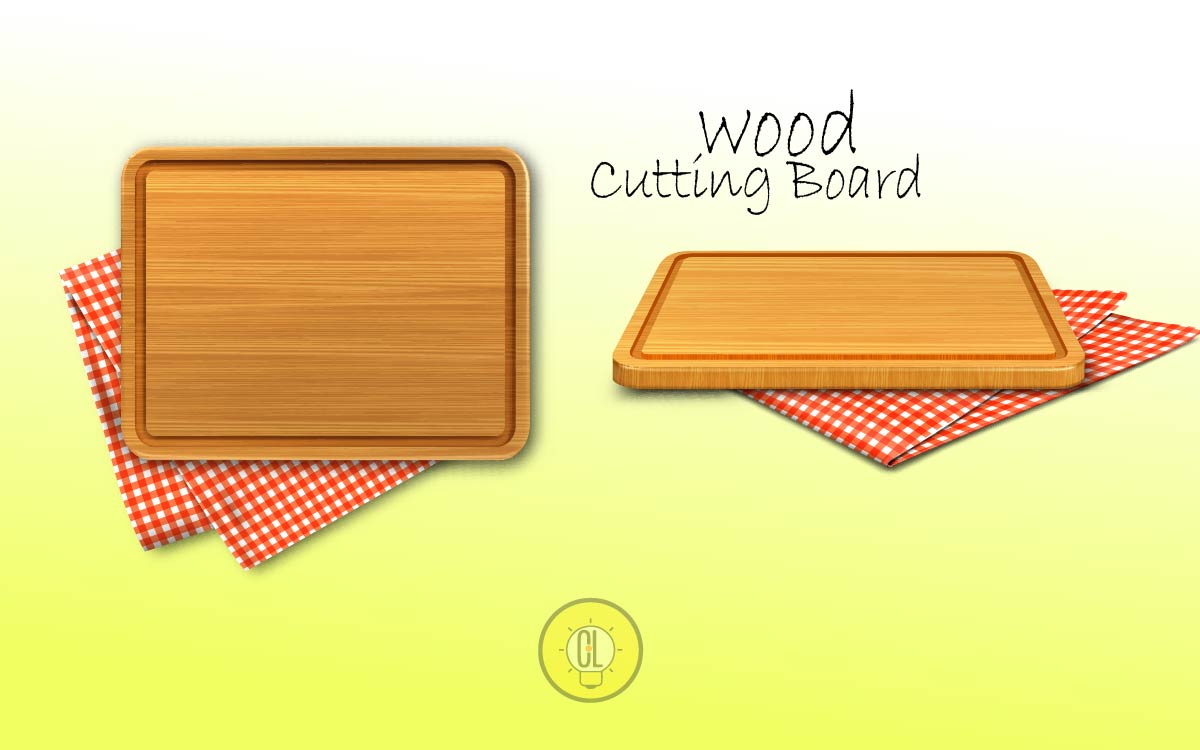
- Cutting boards from wood have a tradition, for a long time. The look of a wooden board is also beautiful, they give kitchens warmth and comfort.
- You have the advantage that you protect the blades of your knives. These stay sharp even with frequent use because they are harder than wood.
- Of course, the wood is not dishwasher safe as it would swell over time.
- You can wash these boards thoroughly under running hot water with a little washing-up liquid after each use. Therefore these are not any more unhygienic than plastic boards or boards made of glass.
- The resin of the wood contains components that have an antibacterial effect, the spread of bacteria is counteracted in a natural way.
If you attach great importance to appearance and do not shy away from the greater expense of cleaning, you are well served with a wooden board. Wooden boards are particularly suitable for cutting bread or cheese, as hardly any moisture escapes from the wood.
Features: Plastic Cutting Boards
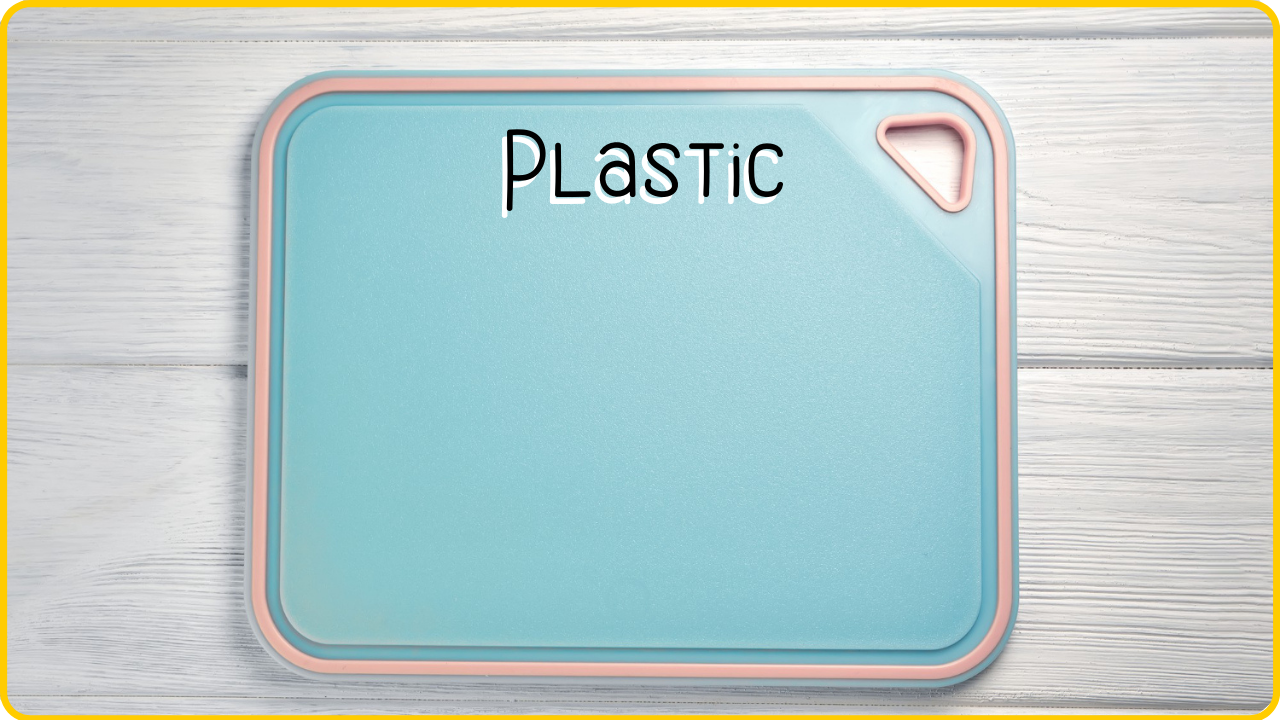
- Plastic boards are dishwasher safe, so you don’t have to laboriously clean them by hand.
- They are particularly suitable for all cutting work where liquid can leak out as plastic doesn’t absorb liquids.
- Like wood, the plastic board is also kind on your knife.
- Any knife cuts on the board are permanent and may provide safe heaven to bacteria.
- Modern plastic cutting boards are coated with an antibacterial layer to fight off pathogens.
Features: Glass Cutting Boards
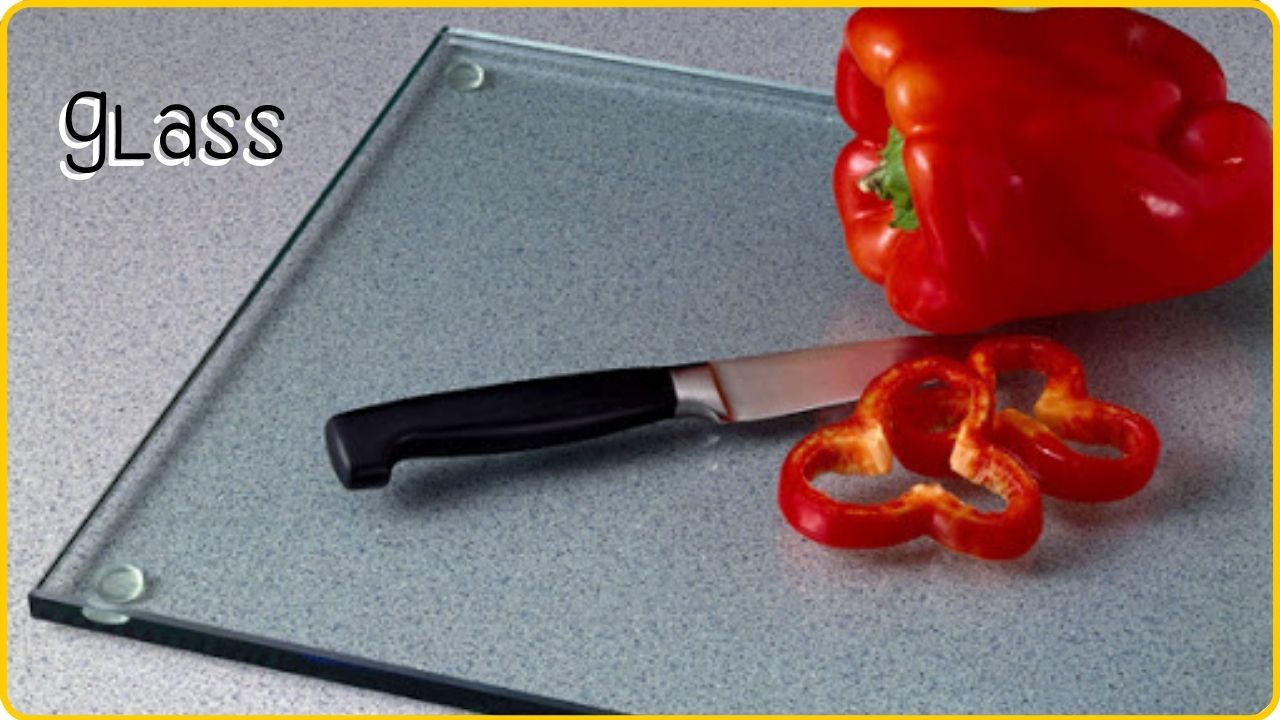
- Glass cutting boards are also dishwasher safe.
- Bacteria have no chance to populate.
- Do not take on any odors or discoloration from the food.
- Because glass is harder than your kitchen knife blade, you are sure to dull your knife even in just a single use.
If hygiene and quick cleaning are more important to you than maintaining your knife blade, you can safely use a glass cutting board. But at the same time, glass cutting boards are fragile and easily breakable, we honestly don’t recommend using a glass board.
